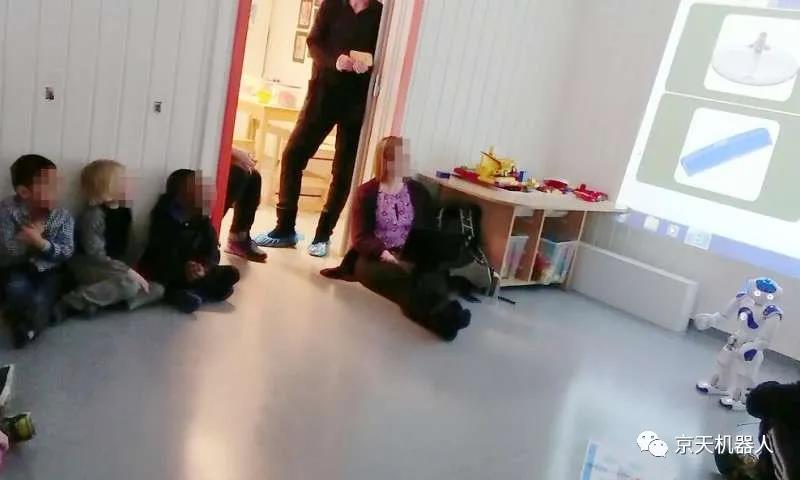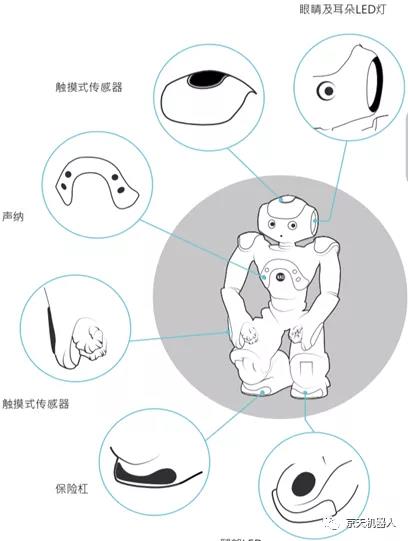
Nao robot provides children with a "language bath" program in a daycare center in Oslo
Since robots and toys have many common features, they can be a valuable tool for teaching children in an interactive and innovative way. In recent years, some robotics experts and computer scientists have been studying how to introduce robotic systems in classrooms and preschool environments.
In order to explore the value of social robots in education, researchers at the Norwegian Computing Center recently tried to use them to teach Norwegian to immigrant children living in the Grod area of Oslo. Their paper was published in advance on arXiv and was published as the latest report at this year's ACM Human-Computer Interaction (HRI) conference, demonstrating some of the potential benefits of introducing robotic systems in early learning environments.
Two researchers who conducted this study, Trenton Schulz and Till Halbach, told TechXplore: "The main inspiration for this study is that there are many areas in Oslo. Children do not speak Norwegian at home." "Daycare centers have programs to help these children learn Norwegian. One of the programs called "language shower" aims to expand the child's vocabulary. Our research explores the use of robots to implement The possibility of the procedure."
The basic idea of this research conducted by Schulz, Halbach and their colleague Ivar Solheim is to support teachers using social robots to deliver language learning programs. The program is currently available for children aged 3 to 6 in a local daycare center in the Grorud area of Oslo, but it can also be provided to families of children to help them practice other components of language skills at home.
In the fall of 2018, researchers conducted a small-scale study to evaluate the potential of its design, which involved children in multiple daycare centers in the Grorud district. The learning curriculum they designed uses a small social robot called Nao to be delivered to up to 15 children at a time, which is linked to an application projected on the wall in front of them.
The app generates pictures that represent the terms that children are trying to learn (for example, chairs, forks, showers, etc.). Subsequently, the robot asked the children to name the objects they saw aloud, and used a speech recognition engine to process their answers to determine right and wrong.
Schultz and Halbach explained: “The robot acts as the leader of the lesson, guiding the children to learn the lesson on the tablet.” “The tablet will display pictures of different things and ask the children to say what it is. Then they will be asked to say what it is. , The tablet will listen and say whether the child’s answer is correct. Finally, if the child’s answer is correct, the robot will perform different actions, play songs and dance."
The application developed by the researchers can also be used alone without the Nao robot. This means that parents can easily download it and use it to improve Norwegian or help children practice language skills at home.

Schultz and Halbach said: "In general, we feel that the pilot study is successful because the children participating in the competition seem to enjoy interacting with the robot." "We are currently evaluating children through a six-week study. Does your vocabulary develop more than when they participated in the traditional version of the "'language shower" program (that is, not using robotics).
If Schulz, Halbach, and Solheim's ongoing evaluation research yields positive results (ie, if they find that their technology-based learning strategy is more advantageous than the original'language shower' program), then their learning system can eventually be used in other ways Daycare centers and nurseries implement schools in Oslo or other parts of Norway. In addition, their work may inspire other research teams to create similar robot-based methods aimed at teaching children different languages.
Schultz and Halbach said: "We are now looking for other areas that can help develop language and social skills." "An example is children with autism. Currently, we focus on Norwegian, but the program may eventually adapt. Yu teaches other languages and different subjects."
The company has a small number of NAO robots in stock, and friends in need can get in touch with us.

Donghu Robot Laboratory, 2nd Floor, Baogu Innovation and Entrepreneurship Center,Wuhan City,Hubei Province,China
Tel:027-87522899,027-87522877
Robot System Integration
Artificial Intelligence Robots
Mobile Robot
Collaborative Robotic Arm
ROS modular robot
Servo and sensor accessories
Scientific Research
Professional Co Construction
Training Center
Academic Conference
Experimental instruction
Jingtian Cup Event